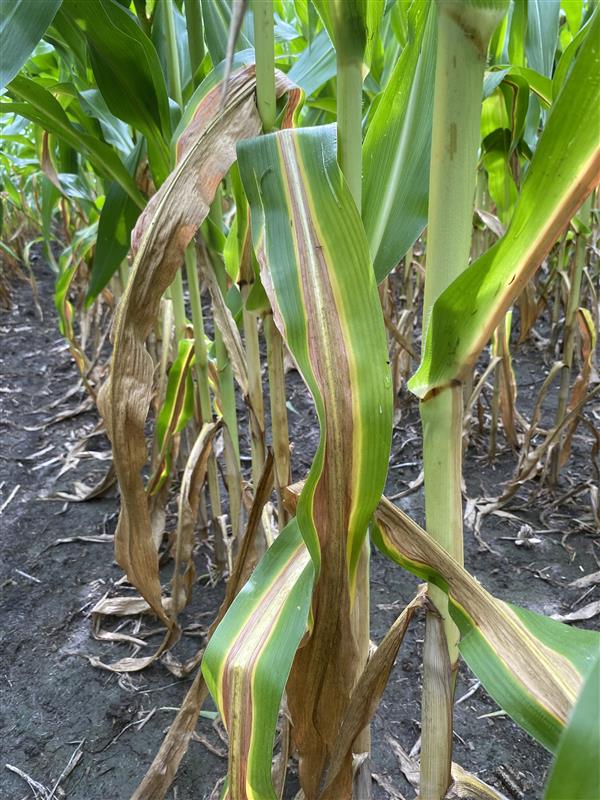
Darby Danzl
Regional Technical Agronomist
darby.danzl@ilsoy.org

Darby Danzl
Regional Technical Agronomist
darby.danzl@ilsoy.org
Darby Danzl UPDATES


Corn and soybean fields across McLean, DeWitt, and Sangamon Counties have now reached the reproductive stages, with soybean fields closing their canopies and tassels clearly visible across every corn field I’ve driven past this week. These reproductive stages, combined with recent hot weather, create favorable conditions for insect and disease pressure—both of which are likely present by now, especially where preventative applications weren’t made. The heat is expected to ease starting tomorrow, which is good news for corn yields, since elevated night temperatures can greatly impact production. In corn fields with nitrogen deficiency, lower leaves are firing and showing the characteristic V-shaped chlorosis/necrosis. While rainfall has been consistent across the region, it remains scattered, with some areas receiving several inches over the past week.
Hot temperatures are finally expected to break starting tomorrow, which will benefit corn yields as we enter the late reproductive stages. Hot nights during grain fill can significantly reduce yields because corn plants continue to respire at night, and higher nighttime temperatures increase this respiration rate. This raises the plant’s demand for sugars (photoassimilates), creating an imbalance: while sugar production (photosynthesis) stops at night, the demand continues. As a result, more sugars are consumed for maintenance instead of being allocated to the developing kernels. This reduction in available carbohydrates for grain fill often cause a reduction in grain yield. Other processes in the plant are also influenced by hot night temperatures and can contribute to yield losses, so seeing a temperature decrease in the coming weeks is something both the corn crop and I will look forward to.
Precipitation has been more than adequate in most of the region as scattered showers have been consistent.
R2-R3
R2-R3
Japanese beetles, as usual, have been found defoliating soybean leaves and nibbling at corn silks. Pressure varies greatly between and within fields.
Southern rust was scattered throughout the field I scouted. This disease is easily identifiable by rust‑colored pustules on the upper leaf surface, often surrounded by chlorosis (leaf yellowing). The recent hot weather likely contributed to its appearance this week, as the pathogen thrives in consistent 80–90°F days.


 and then
and then